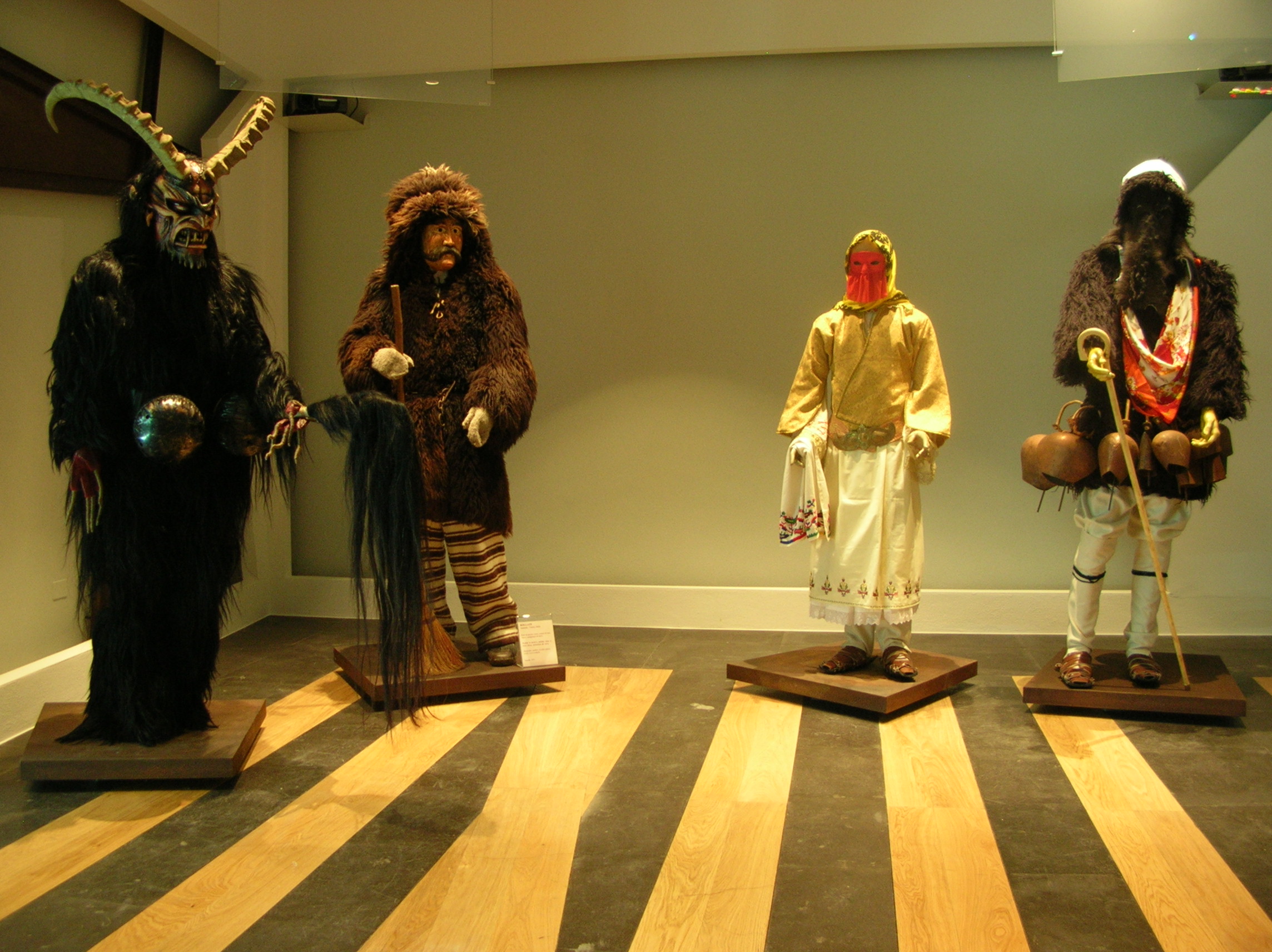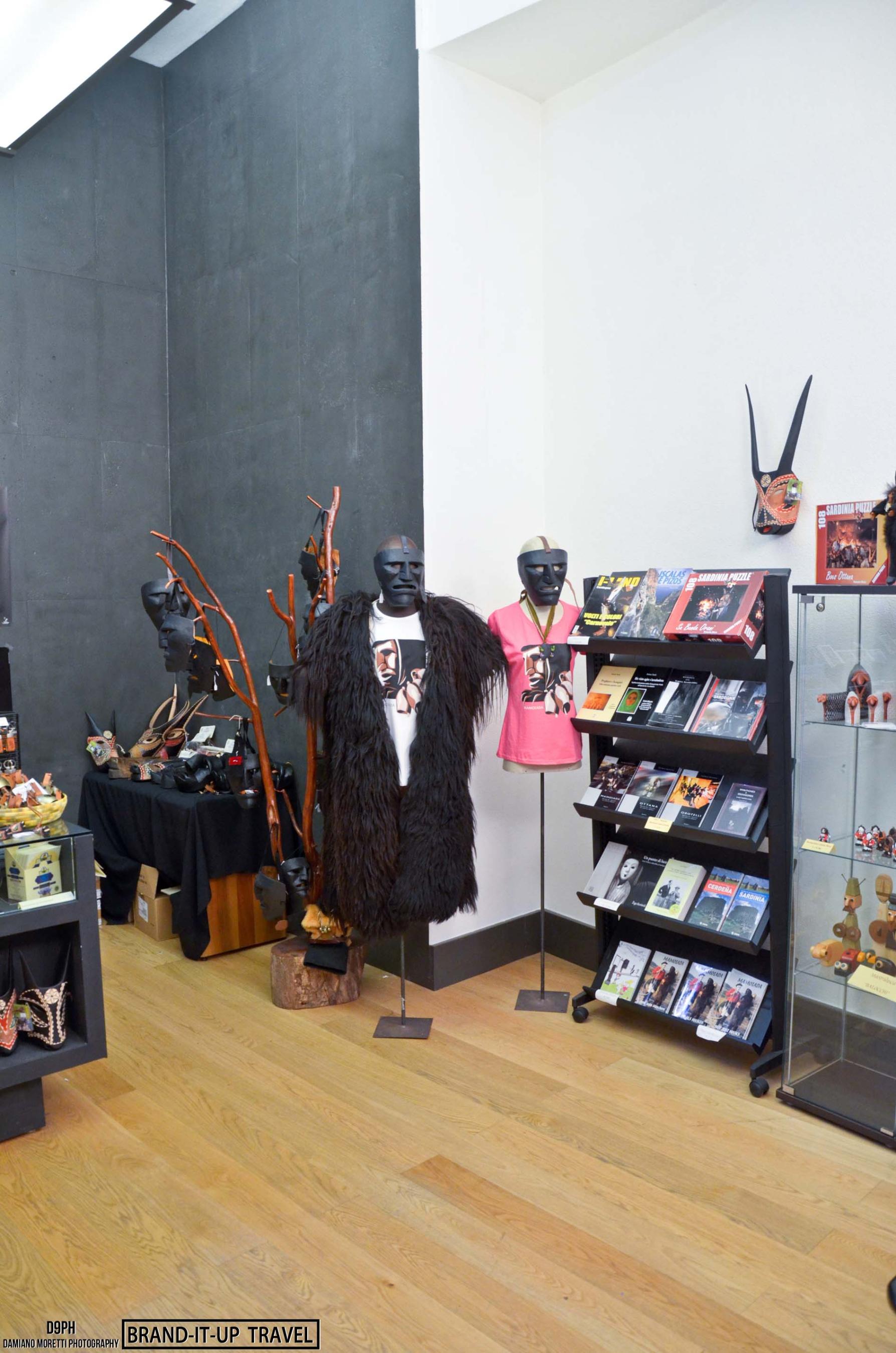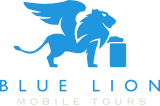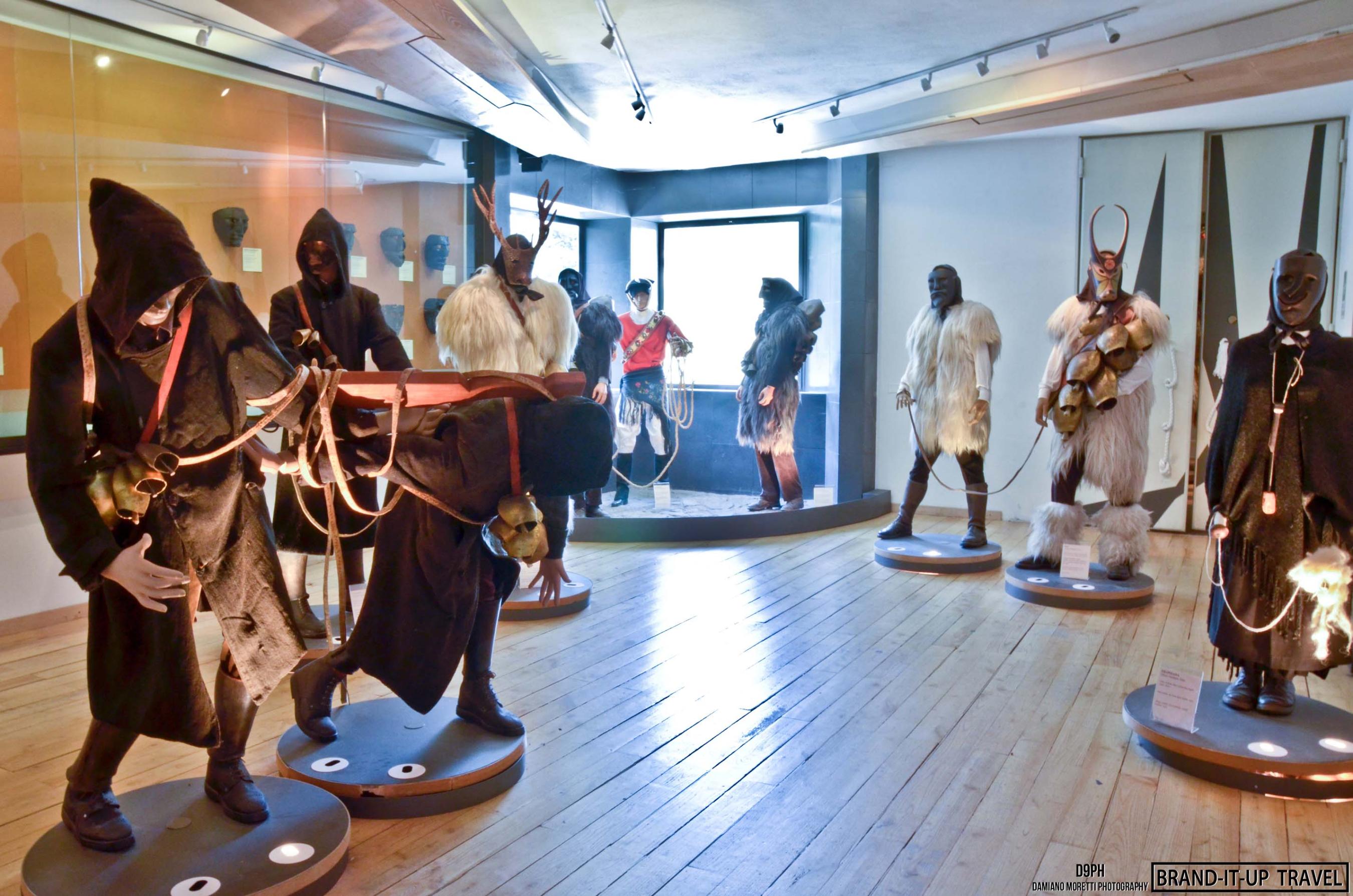
The room of the Sardinian Masks
The Sardinian Masks
Mamuthones and Issohadores (Mamoiada)
The costume of the Mamuthone consists of a velvet garment modeled on that of shepherds, along with a black sheepskin (mastruca); a set of cowbells (carriga) weighing about 30 kg, whose din supposedly has the power to drive away evil spirits; a woman’s headscarf as a reference to female fertility (since women cannot wear the costume); a beret (or bonette); and a black, sad-faced wooden mask. In the past, the masks were carved in wild pear wood, which was light and easy to work with; today other types of wood with similar characteristics are used.
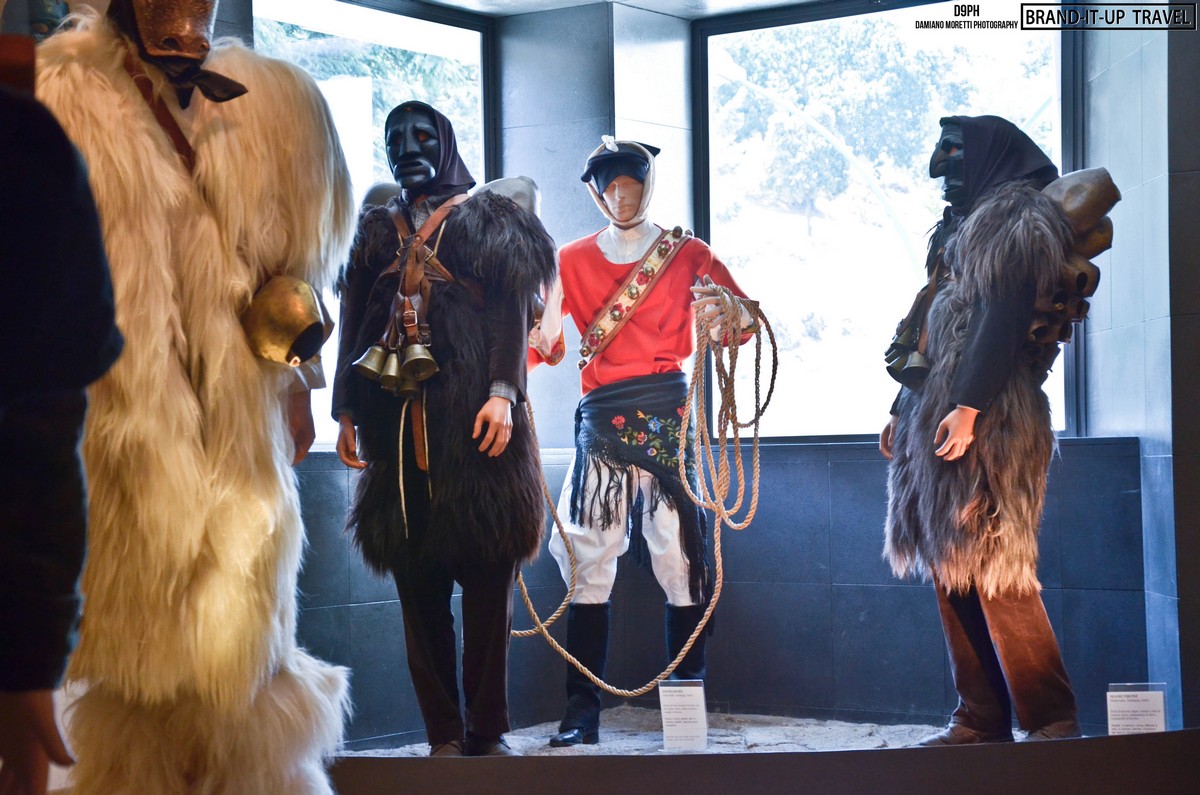
Mamuthones and Issohadores
The Issohadore wears the traditional garb of Mamoiada: a white shirt, a red overshirt, a sash with little bells, and white pants partly covered by a fringed, flowered shawl, another feminine symbolic element. His headgear is a berritta, a typical beret made of orbace, a handwoven Sardinian woolen fabric, tied on with a scarf. The Issohadore carries a soha, a long rope made of rushes with a slipknot at the end, which he uses to catch bystanders at the parade (especially women), thus involving the community in the ritual and symbolically conveying well-being and fertility to its members. Traditionally the Issohadore did not wear a mask, but in recent years the organizers have introduced a white mask with pleasant features.
Merdules and Boes (Ottana)
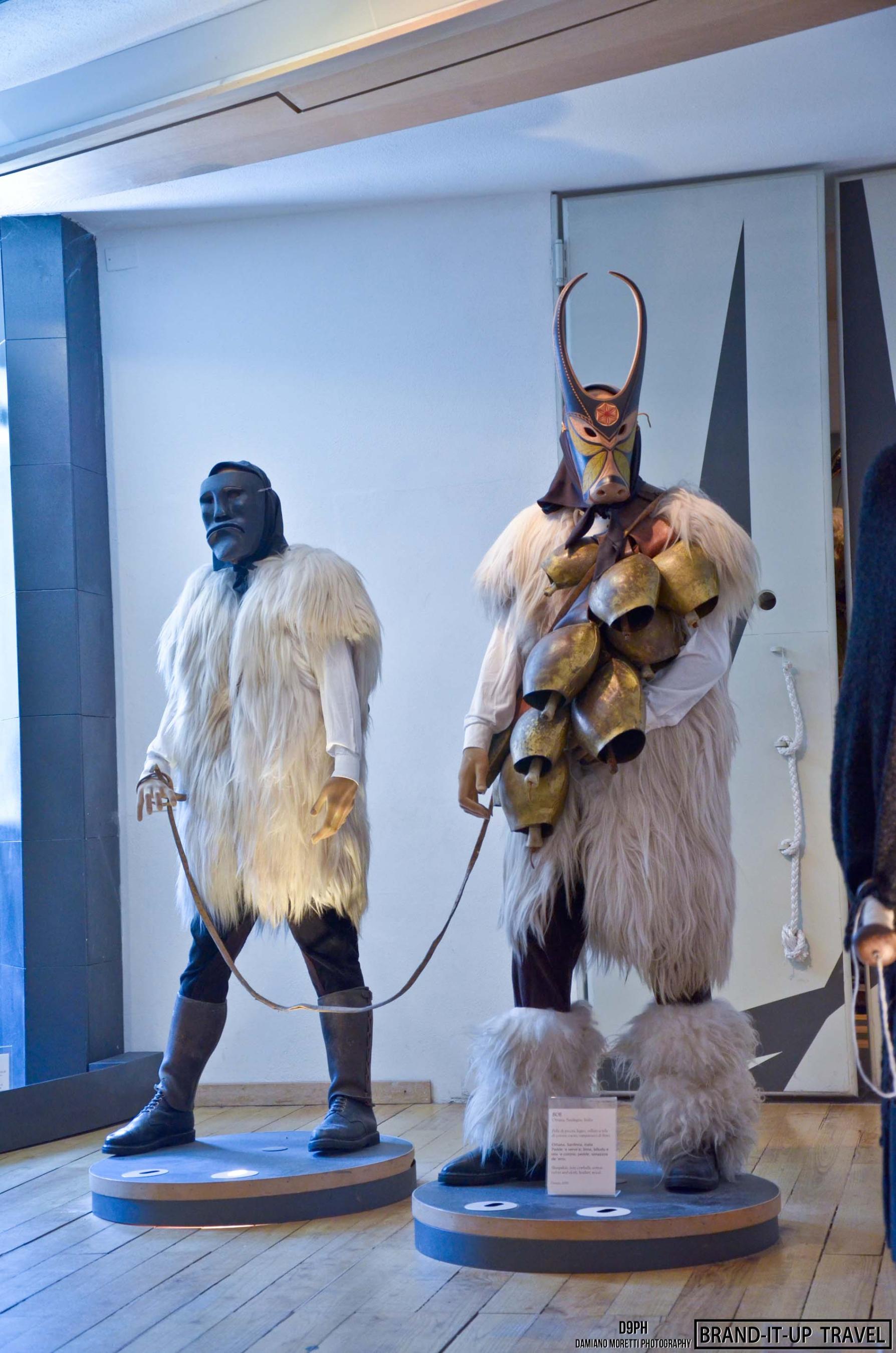
Merdules and Boes
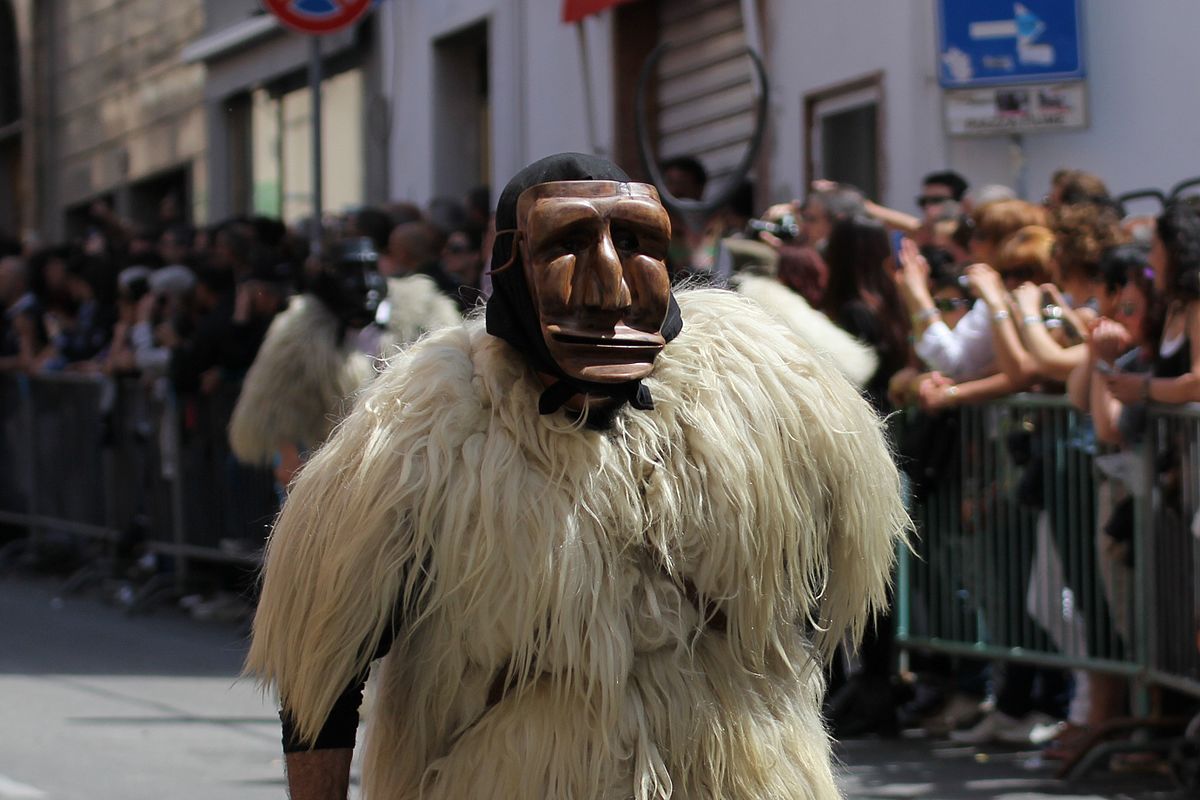
Merdule
Photo: Gianni Careddu, via Wikimedia

Merdules and Boes
Photo: Gianni Careddu, via Wikimedia
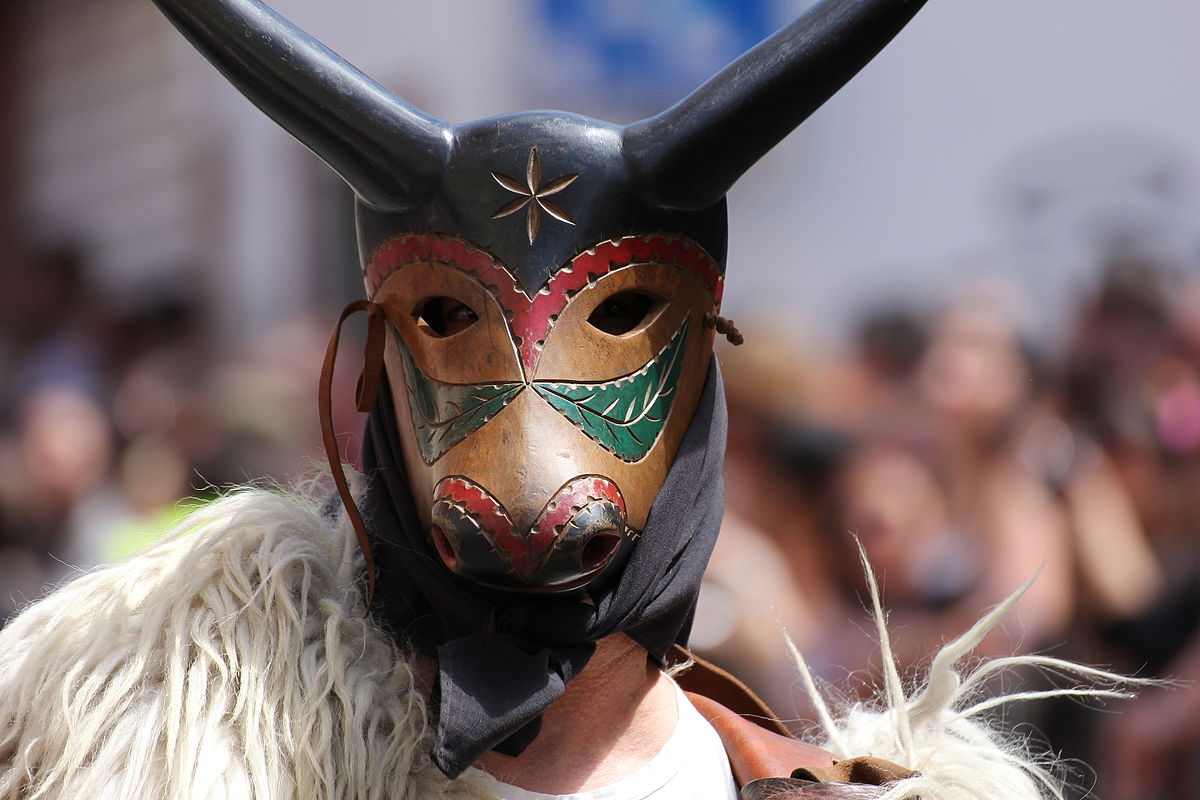
Merdules and Boes
Photo: Gianni Careddu, via Wikimedia
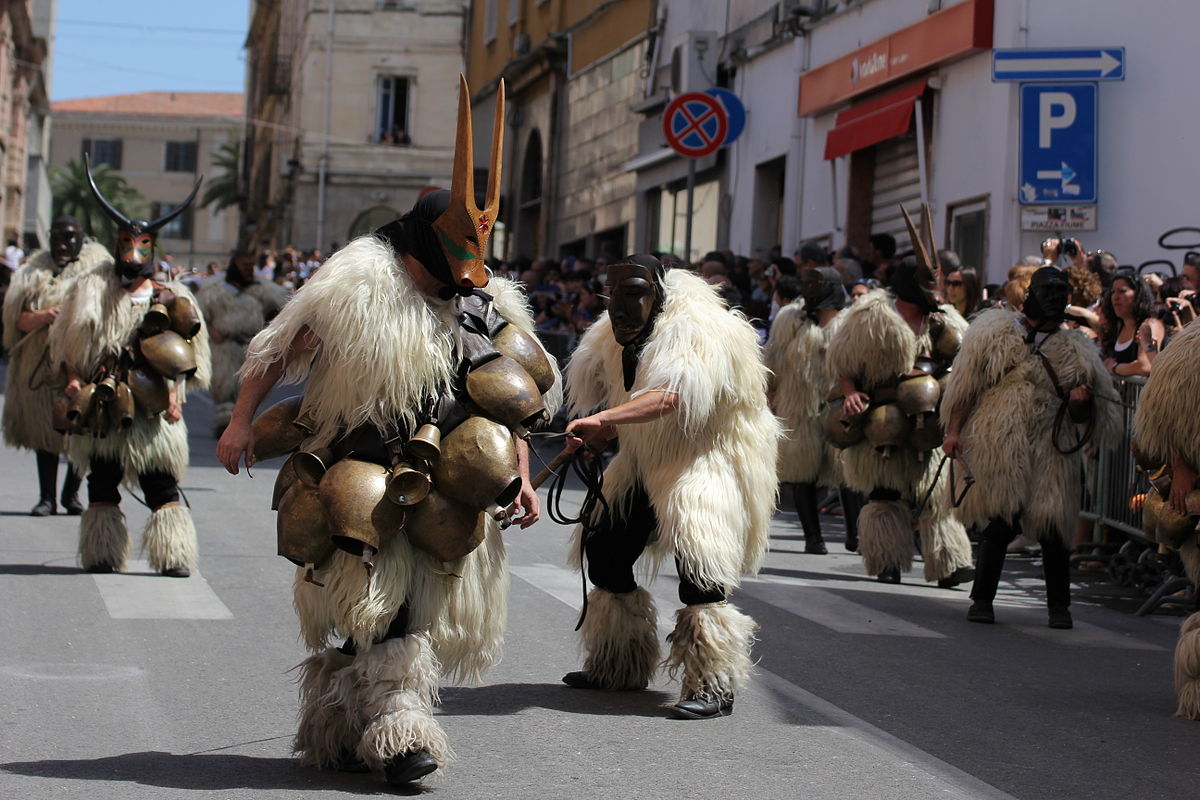
Merdules and Boes
Photo: Gianni Careddu, via Wikimedia
The Merdule and Boe are masks from the Carnival of Ottana. In local dialect, mere de ule means "herd owner", so the Merdule represents the herder, while the Boe is the animal, a bovine figure that is a traditional and particularly venerated symbol of strength and virility. This costume also consists of sheepskins and large bells. Ottana highlights the importance of animals for the survival of the whole community: they provide leather and fleece for protection from the cold, along with meat and milk for nourishment, as well as working the fields and transporting goods and people. Animals were venerated, but also subjugated and dominated by humans. This complex relationship is well represented in the masks of Ottana, which show fatigue, pain, rebellion and, above all, the symbiosis between human and beast. The Carnival of Ottana includes a range of zoomorphic masks – not only the Boe, but also the stag, donkey and wild boar. Ottana is the only town in Sardinia with such a wide variety of animal masks.
Sa Filonzana (Ottana)
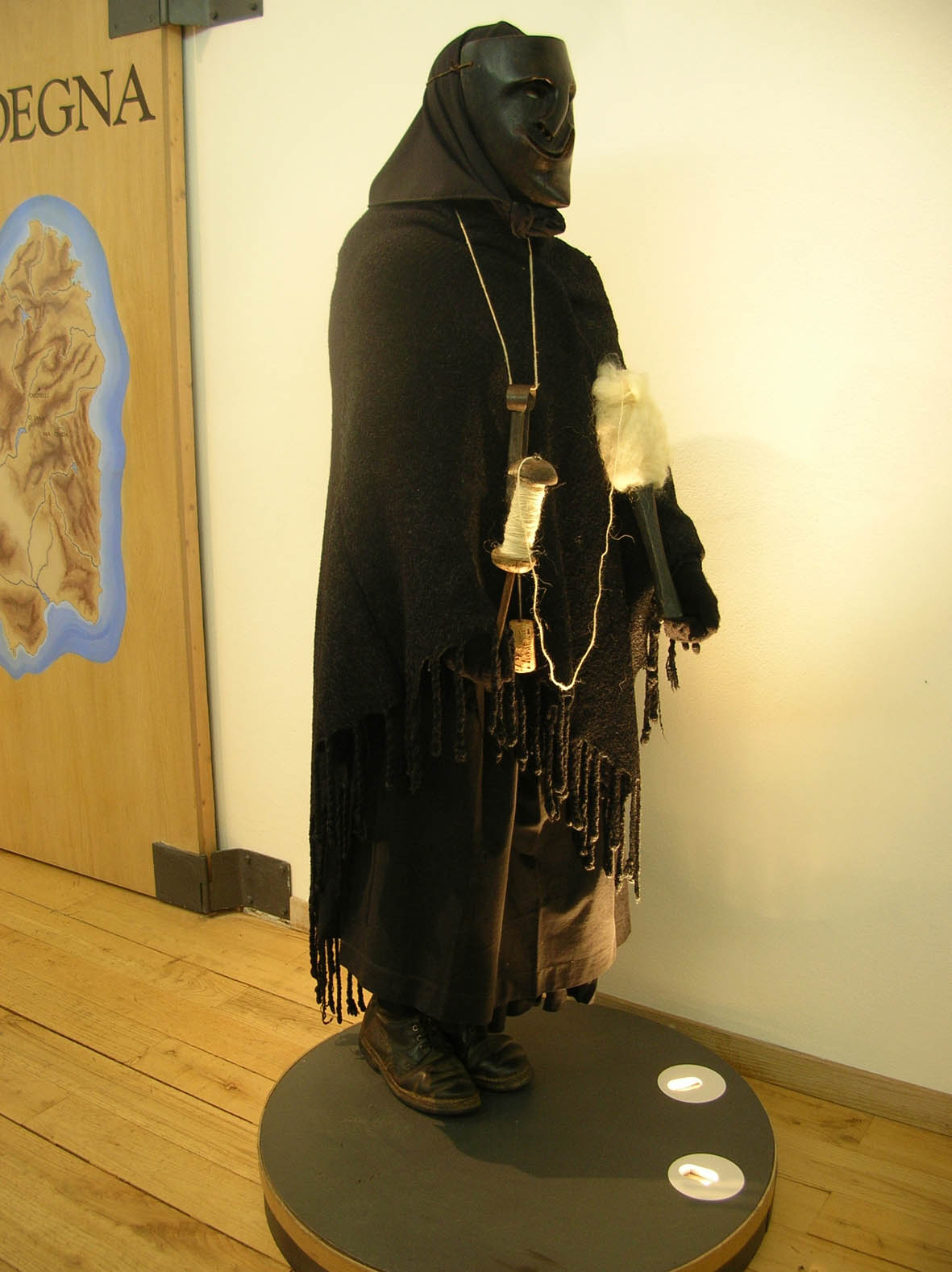
Sa Filonzana
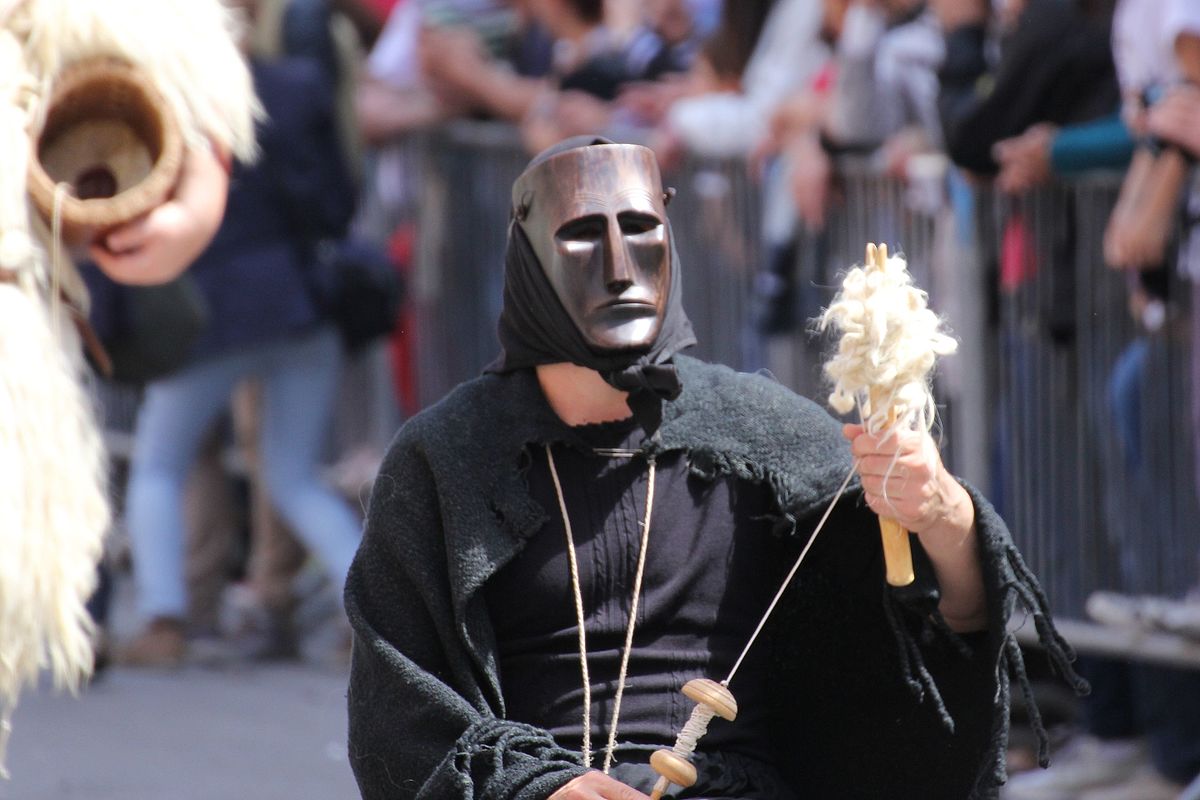
Sa Filonzana,
Photo: Gianni Careddu, via Wikimedia
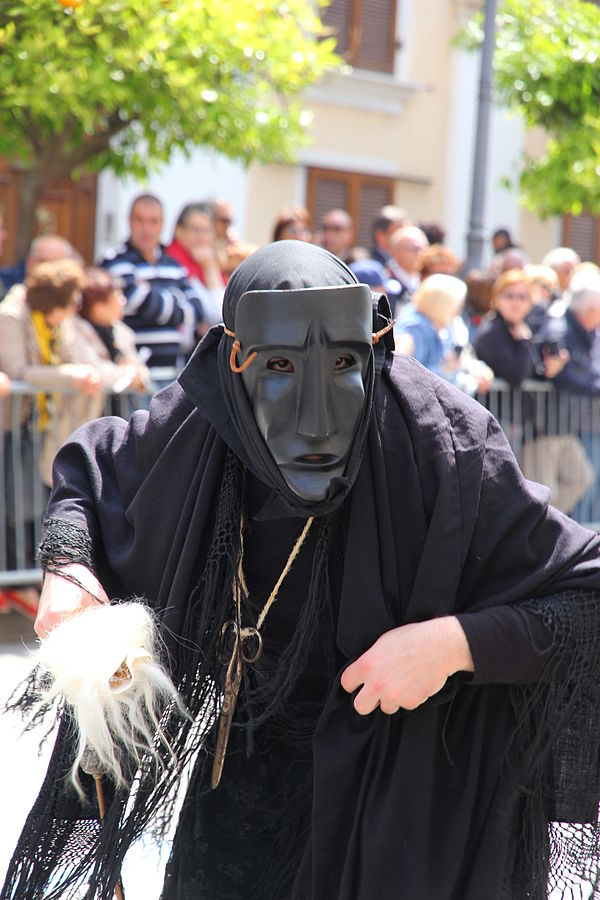
Sa Filonzana
Photo: Gianni Careddu, via Wikimedia
The Filonzana (spinner) is another figure from the Carnival of Ottana, which marches at a distance from the Boes and Merdules. The costume, worn by a man, represents a lame, hunchbacked woman with a black scarf, shawl and skirt. She is called Filonzana because she holds a spindle of wool that represents life, the passage of time and human fate. She wears scissors around her neck, threatening to cut the thread and cause death. This mask is the most important historically and culturally since it is reminiscent of the three Fates (in Latin, the Parcae; in Greek the Moirai), those other legendary spinners who represented the three life stages: birth, growth and death.
Su Thurpu (Orotelli)
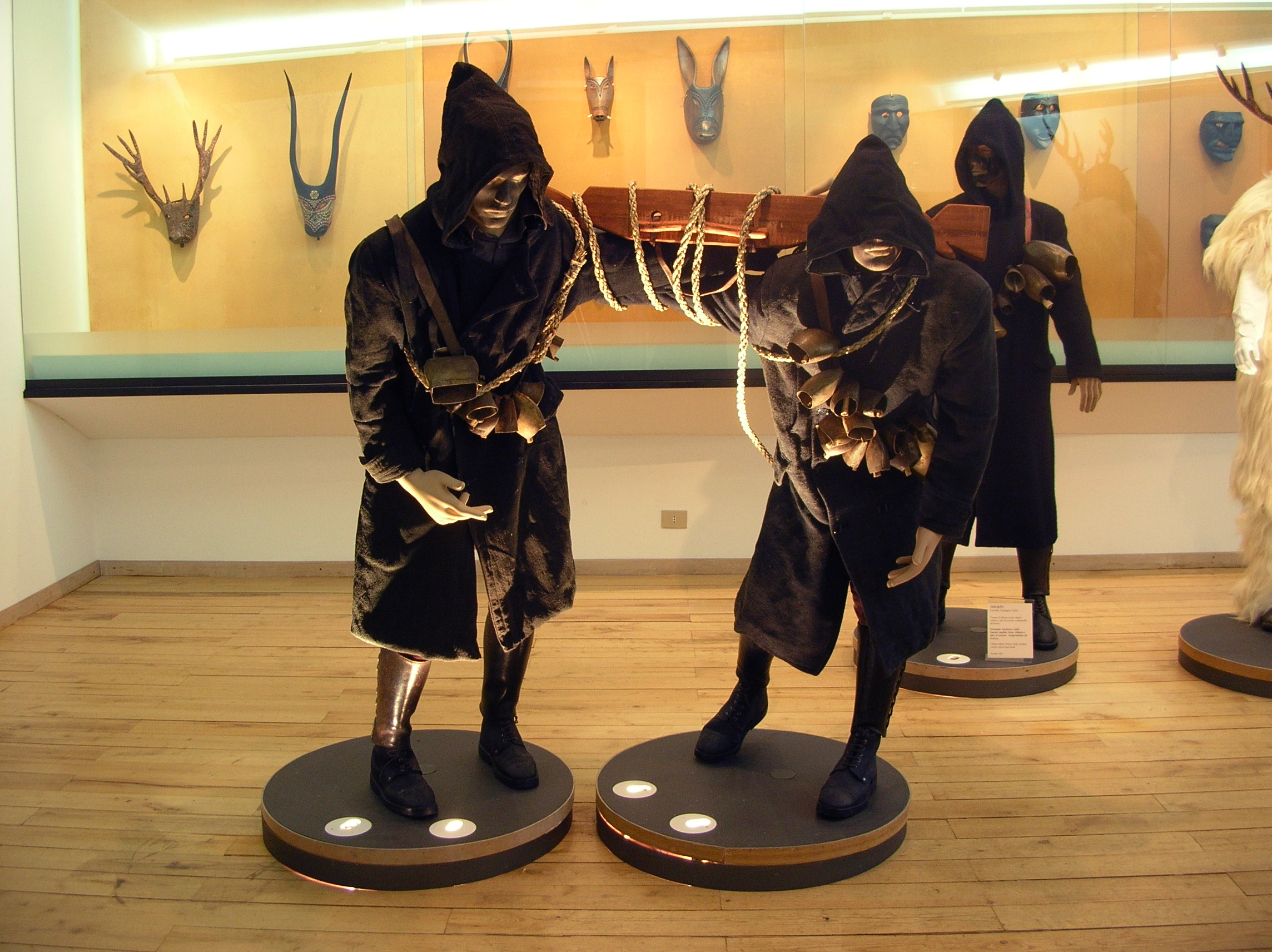
Su Thurpu
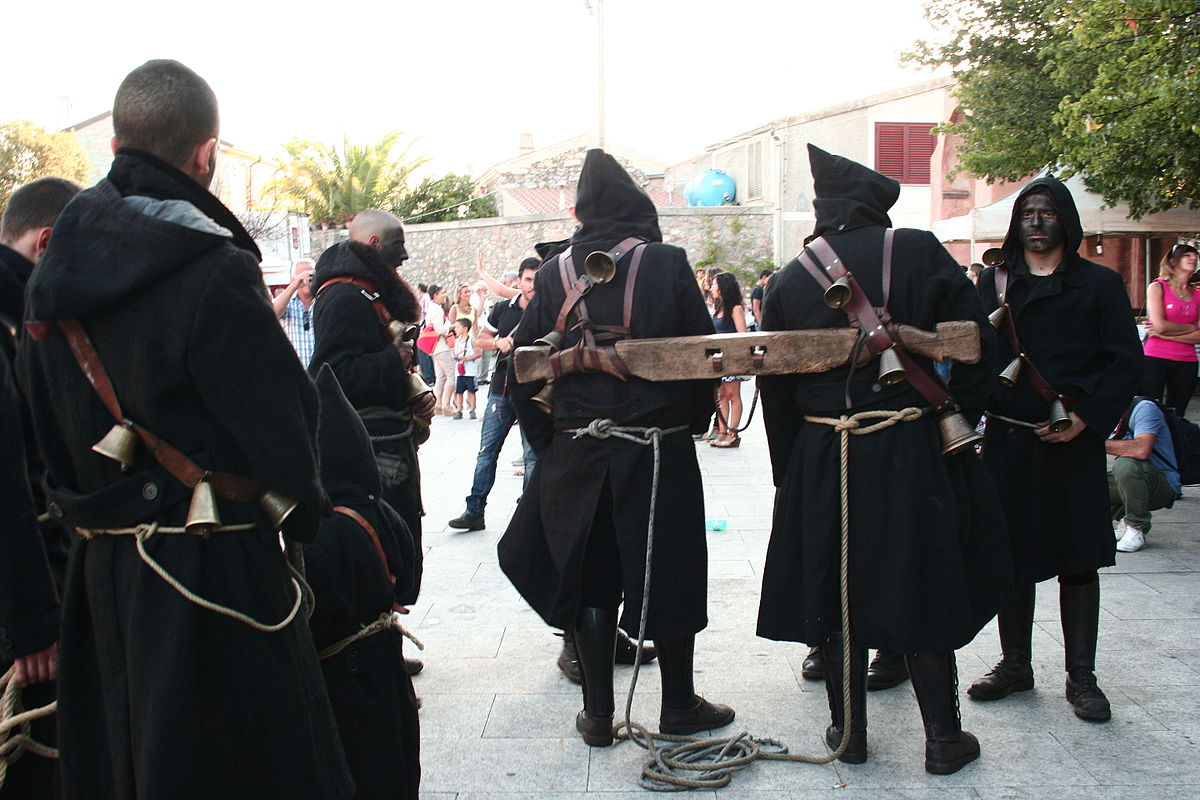
Plow trained by Thurpos
Photo: Prc90, Wikimedia
Su Thurpu is the typical character of the Orotelli Carnival. The name, which means "blind", has been interpreted as meaning animal-like men who do not see because they have become like beasts. Another theory is that the word "blind" may indicate creatures of the underworld, accustomed to its darkness, who return to the world of the living at Carnival time. Unlike other Barbagian Carnival characters, they do not wear skins: the costume is a black coat made of orbace, a warm, impermeable woolen fabric formerly worn by those who worked in the countryside. Nor do they wear a mask; the face is blackened with soot from burnt cork. The parade is also different: some Thurpos push a plow pulled by others who represent oxen under the yoke and working in the fields. Still others pretend to be shoeing horses or planting crops, thus simulating all types of farming scenes and celebrating an agricultural ritual to appease the gods and/or nature.
